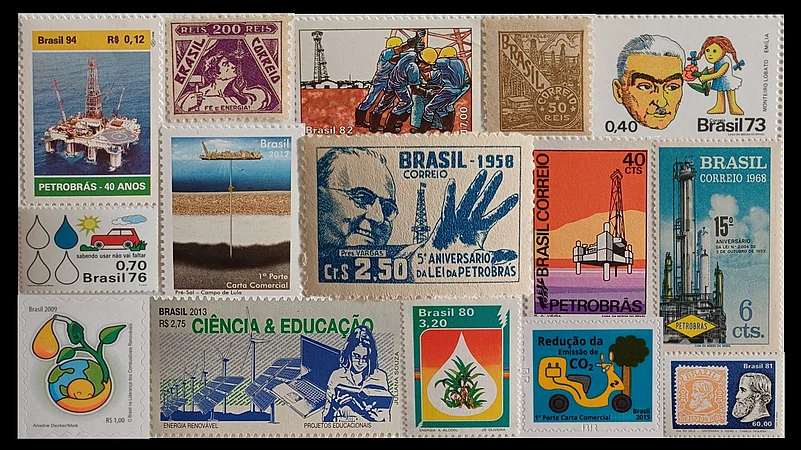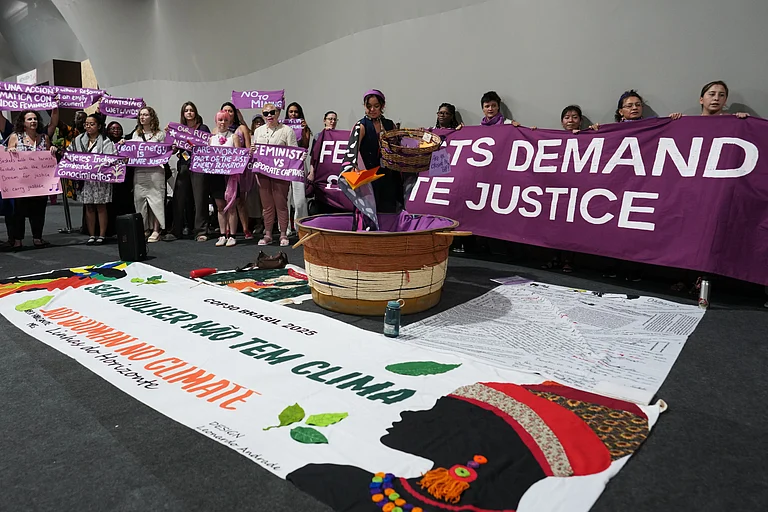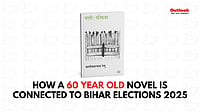
Brazil’s stamps reflect its evolution from early oil exploration to offshore deepwater breakthroughs.
The country simultaneously built a strong renewable identity through ethanol, hydropower, solar and wind.
As COP30 host, Brazil faces the challenge of leading on climate while joining OPEC+ and expanding oil production.
Getúlio Vargas, the President of Brazil, was known to have famously dipped his hand in crude oil to symbolise the significance of the resource to the country and to promote the mantra “O Petroleo e Nosso” (the oil is ours). This iconic gesture was captured in the design of the postage stamp issued in 1958 by Brazil on the occasion of the 5th anniversary of the law of the state oil entity Petrobras. Brazil occupies a unique place in the energy landscape – a leader in offshore oil extraction technology and also a leader in alternative energy, particularly biofuels. This duality is also featured in the postage stamps released by the country over the years, and as Brazil is set to play host at COP30, the United Nations Climate Change conference in November this year, a review of the postage stamps issued by the country over the past decades reveals the fascinating history and evolution of its oil and alternative energy industry.
The origin of the energy industry in Brazil can be traced back to 1864, during the regime of Emperor Dom Pedro II, when the first oil exploration rights were granted to an Englishman, Thomas Denny Sargent. While the venture did not yield any significant results, it did represent a pioneering effort in the country’s oil journey. The stamp issued in 1981 depicts Emperor Dom Pedro II, the second and last emperor of Brazil, whose reign lasted from 1831 to 1889. The stamp-on-stamp design features the original 19th-century stamp with Pedro II's profile, alongside a modern version of his image.
It was in the 1930s and 1940s that active development in the energy domain occurred, beginning with the discovery of oil in Lobato, Bahia, in 1939. The 50 Réis “Petróleo” stamp, issued by Brazil circa 1941, features Brazil’s early oil discoveries. During this period, writer Monteiro Lobato emerged as a key activist for the country’s oil independence and nationalisation of oil exploration. The postage stamp from 1955 bears Lobato’s portrait, while the 1982 issue marks his birth centenary and depicts an oil rig and workers involved in oil exploration.
The strong advocacy for a state entity for oil exploration ultimately culminated in the creation of Petrobras in 1953. Stamps issued in 1963, 1968 and 1994 mark the 10th, 15th and 40th anniversaries of Petrobra.
While fossil fuel development was progressing, the quest for alternative fuels was also well underway in Brazil. Ethanol fuel blends in gasoline emerged in the 1930s and substantially increased during the fuel shortages of World War II. But it was the 1973 oil crisis that led to the launch of the Proálcool Program in 1975 by President Ernesto Geisel. The program promoted sugarcane ethanol as an alternative fuel. During this phase, Brazil also expanded its hydropower sector with the initiation of the Itaipu Dam project in the 1970s. Stamps from 1980 cast the spotlight on the four alternate sources of energy - Ethanol (Sugarcane/Alcohol energy, "Energia a Álcool"), Hydropower, Solar Power and Wind Power. The stamp labelled “Energia a Álcool” shows sugarcane inside a stylised drop, symbolising ethanol fuel from sugarcane.
Brazil’s foray into offshore oil commenced in 1968 with the first offshore oil discovery by Petrobras in the Guaricema field. This was followed by giant deepwater oil finds in the 1980s. But it would be the discovery of vast pre-salt oil reserves in the Tupi (now Lula) field in 2006 that would propel Brazil into the elite league of top global oil producers. The 2012 postage stamp displays the image of the Lula field.
As Brazil and Petrobras cheered technological advances in the field of energy, the unravelling of the Lava Jato (Operation Car Wash) corruption scandal in 2014 severely tarnished the image of Corporate Brazil and forced Petrobras into significant restructuring. Despite the turmoil, by 2023 Brazil had emerged as the world's 7th-largest oil producer, and had also become the world's second-largest ethanol producer, after the US.
A stamp issued in 2015 bears the message of the reduction of CO2 emissions.
As the host of the COP30 summit that commences in November 2025, the country faces a delicate balancing act – that of retaining its technical leadership in developing hydrocarbons while simultaneously promoting and leading production of alternative sources of energy. Earlier this year, Brazil’s government approved joining OPEC+, a group of major oil-exporting nations. Meanwhile, the COP30 President, Ambassador André Corrêa do Lago, has called for "mutirão”, collective action against climate change. One hopes Brazil can effectively leverage its dual strengths in fossil and renewable energy to provide a guiding model for the world.



























